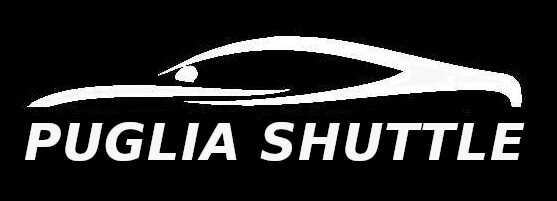ITINERARIES
10-days itinerary in Apulia: Salento, Valle d'Itria, Matera, Murge and Terra di Bari
In this 10-day itinerary in Puglia we will take you on an incredible journey to discover this incredible region. We will start from Salento, the most popular area for tourists in the summer due to its beautiful beaches and more, and then reach the Itria Valley, an area famous for its trulli, farms and centuries-old olive groves; we will then take advantage of the proximity to Basilicata to visit Matera, the city of trulli, a UNESCO heritage site, and the Murge, and then conclude the itinerary in the Land of Bari.
Following this route, the best choice for those arriving by plane is to arrive at Brindisi airport, and then return from Bari airport. In any case, whatever your choice, you can easily move between Brindisi and Bari with the regional train or with a convenient rental with driver service.
The latter is however necessary to move within the various villages, seaside resorts and in the countryside of the Itria Valley as they are located in areas not served by public transport. We therefore recommend renting a car upon arrival at the airport or opting for a transfer service.
For this itinerary, we recommend changing accommodation depending on the areas we will visit; we will indicate the best “bases” for your trip day by day. In this article we recommend some excellent structures in Puglia.
Day 1: Lecce and the Baroque
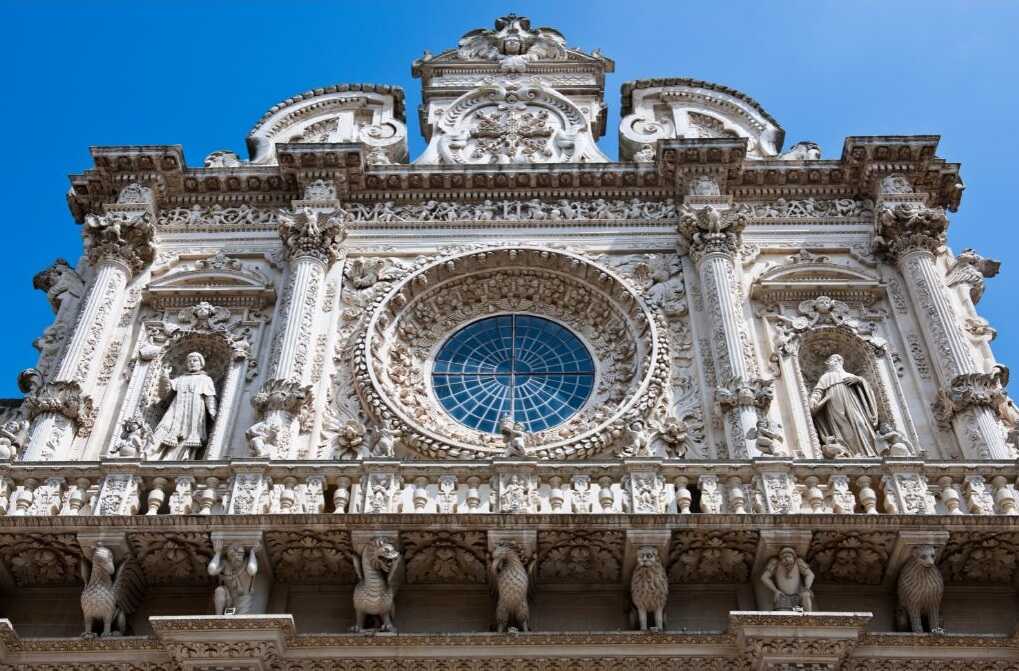
The first day of our itinerary is dedicated to Lecce, known as “the Florence of the South” due to its Baroque buildings. To visit Lecce in one day it is certainly essential to start from the Obelisk and Porta Napoli, one of the three gates that were located in the historic center. After crossing Porta Napoli you will enter an area closed to traffic: the real old city.
Here you can visit the Duomo with the bell tower, Piazza Sant’Oronzo, and the famous Roman Amphitheater. The emblem of the Baroque style is certainly the Basilica of Santa Croce with its fascinating rose windows.
During your visit to Lecce, you cannot avoid tasting the rustico leccese, a traditional “walking” food, and the pasticciotto, a typical shortcrust pastry filled with custard.
Many of the best clubs, bars and pastry shops in the city are concentrated in the historic center where, among other things, the famous shopping street is located: via Trinchese. We tell you more about Lecce in this article.
Day 2: the Adriatic coast (Santa Cesarea Terme and Castro)
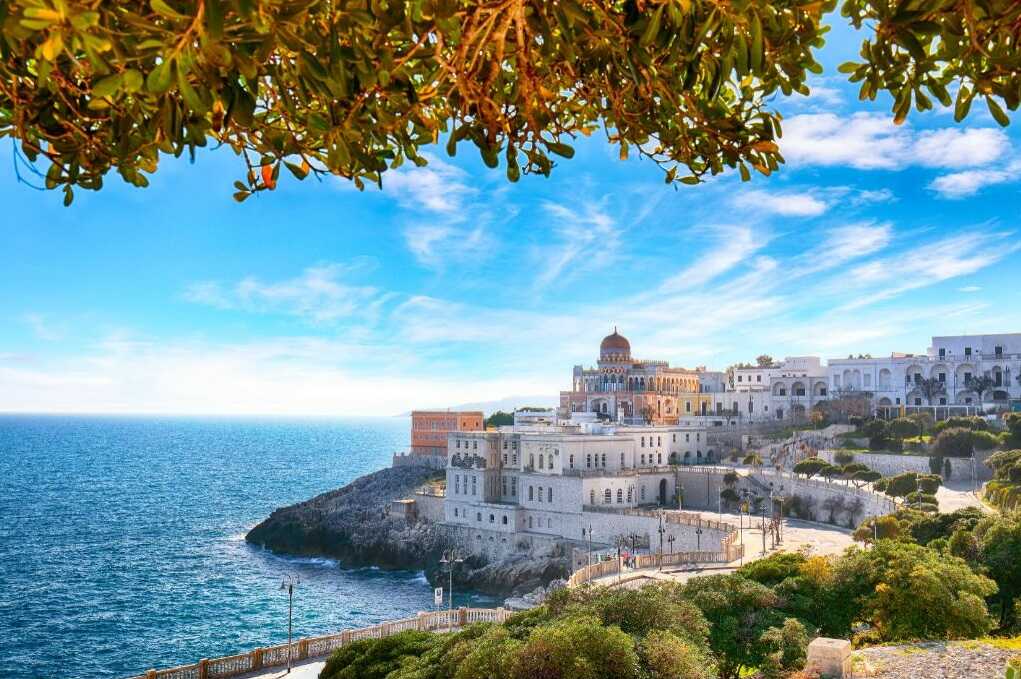
The second day of our itinerary is dedicated to the discovery of some villages overlooking the Adriatic Sea. We are talking about Castro and Santa Maria di Leuca. From Lecce, just continue south. From here, the first place you will reach will be Santa Cesarea Terme, famous for its thermal springs, to which you can dedicate a short visit in the historic center. The second place is Castro. Here you can dive into clear, blue waters and visit the suggestive Grotta della Zinzulusa, one of the largest karst phenomena in Salento. You can also book a boat tour of the sea caves in this area of the Adriatic coast, and then end the day by returning to Lecce, the first base of your trip. In this article we recommend some excellent facilities in Lecce.
Day 3: the Ionian coast (Porto Cesareo and Punta Prosciutto)
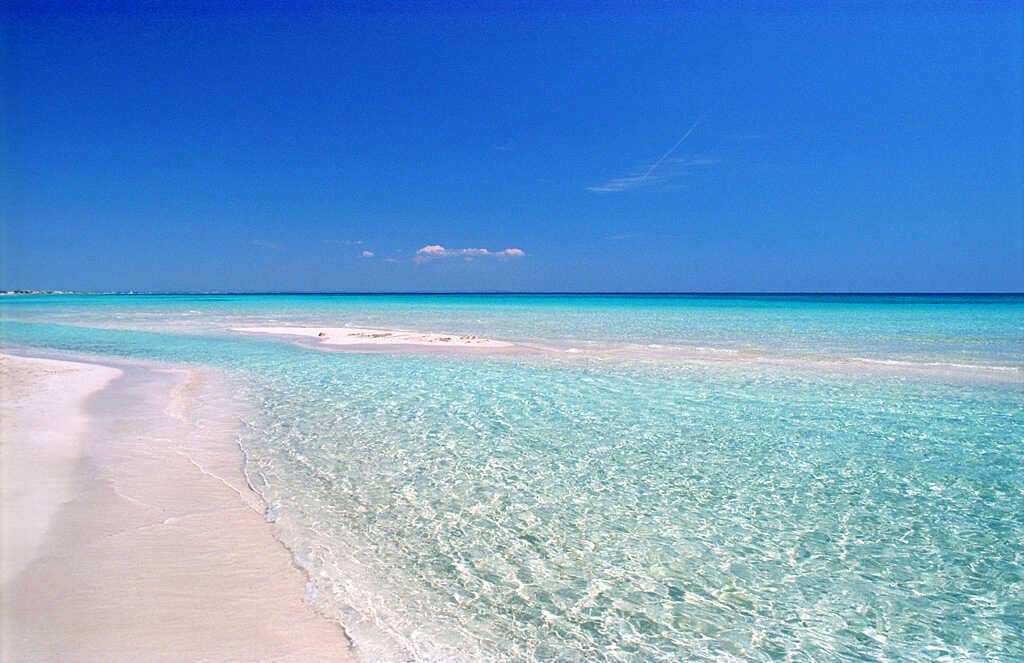
On the fourth day of your itinerary we will focus on the Ionian coast. In particular, we will head south-west and reach the town of Porto Cesareo. Here there is a series of beaches and bathing establishments, which have become very popular in the summer and frequented by tourists and non-tourists. A little more “uncomfortable” as it is “wilder” is the area of Punta Prosciutto, one of the most beautiful beaches in the whole of Salento. Here you can book boat tours to discover the Ionian coast and Porto Selvaggio, snorkeling activities, a sunset boat trip with an aperitif, happy hour and much more. Enjoy the evening in Porto Cesareo, in one of its famous waterfront venues and enjoy a dinner of fresh fish, before returning to Lecce.
Day 4: Otranto, the easternmost point of Salento
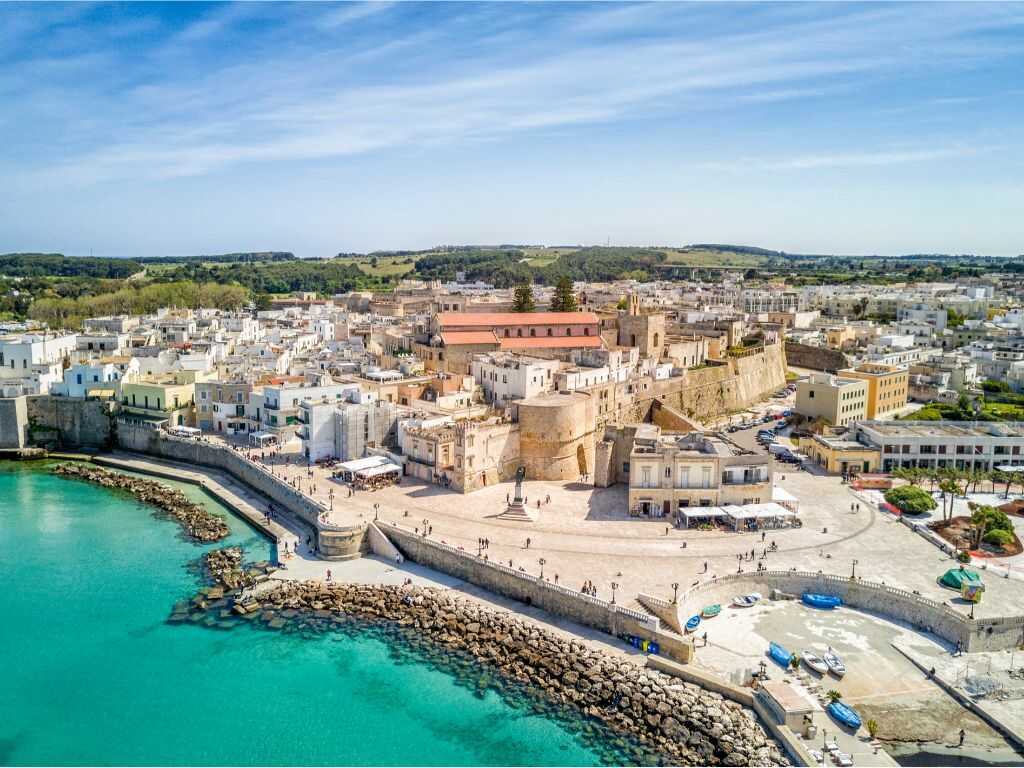
On the third day of your itinerary in Puglia we will visit the town of Otranto, the easternmost municipality in Italy, where it is said there is the point of separation between the Adriatic Sea and the Ionian Sea, almost a bridge between East and West. Your itinerary in Otranto cannot fail to start with a visit to the imposing Aragonese Castle and the Norman Cathedral, the largest church in Puglia!
You can spend the morning visiting its historic center, and then in the afternoon visit the areas “outside” the city. We are talking about the famous Bauxite Quarries, a now disused mining site in which an emerald green lake has formed. Not far from the Bauxite Quarries is the Punta Palascia Lighthouse, the easternmost point in Italy.
You can end your day with a typical Apulian lunch in one of the many restaurants on the Otranto seafront, before returning to Lecce.
Day 4: Ostuni, the “white city”
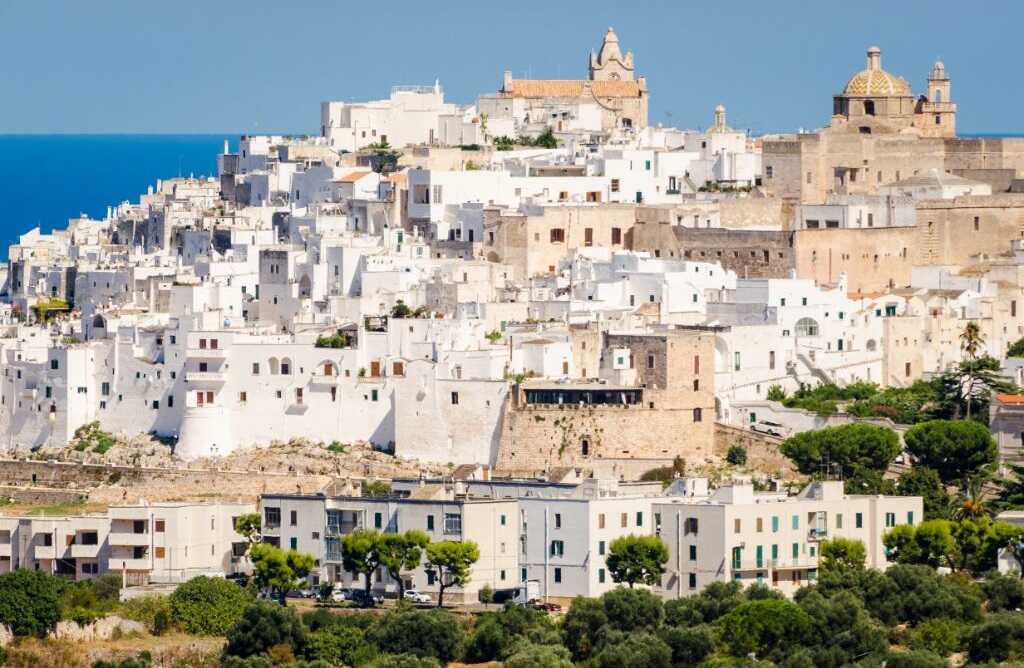
For the fourth day of your tour in Puglia, we will change area and consequently also accommodation and we will head north towards Valle d’Itria, precisely to Ostuni. This village is known as the “white city” because of its characteristic historical center, which in times gone by was completely painted with white lime. Your visit to Ostuni cannot fail to include the Aragonese Walls, the Cathedral, the Museum of pre-classical civilizations of the southern Murgia and Piazza della Libertà, the main square of Ostuni. Object of admiration by tourists is certainly the Obelisk of Sant’Oronzo, also called La Guglia, characterized by the fact that it was carved in local stone in Baroque style. Do not miss some typical dishes such as broad beans and chicory and the focaccia ostunese, which differs from the one from Bari for the addition of mozzarella.
At the end of your day, you will spend the night in Ostuni, the new base of your trip to Puglia.
Day 5: Alberobello and Martina Franca
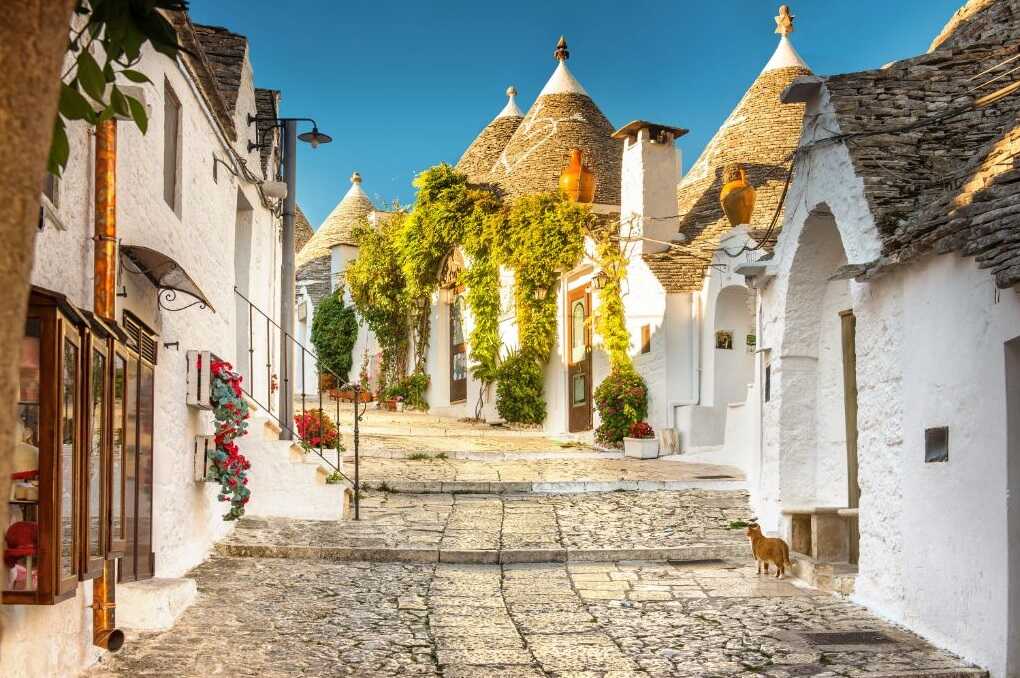
On the fifth day of your itinerary in Puglia, we will move slightly north to reach Alberobello, the city of Trulli, a UNESCO heritage site.
In the main districts of Aja Piccola and Monti, you can admire the Trulli Siamese and the Trullo Sovrano, characteristic because the first are two attached trulli while the second is built on two floors. During your visit, you can also appreciate the Church of Sant’Antonio da Padova, particular for its trullo shape.
The second part of the day is instead dedicated to visiting a village characteristic for its wine. We are talking about Martina Franca and its Primitivo. In addition to the beauty of its baroque buildings such as the Basilica of San Martino in Piazza Plebiscito, the Valle d’Itria area is famous for its vineyards. Martina Franca is the ideal place to live a typical Apulian experience: tasting local wines through a tour of the best wineries in the area. In this article, we recommend some of them. You can’t leave without tasting the capocollo of Martina Franca and its tasty meat bombs.
At the end of this day, return to Ostuni.
Day 6: Polignano a Mare and Monopoli
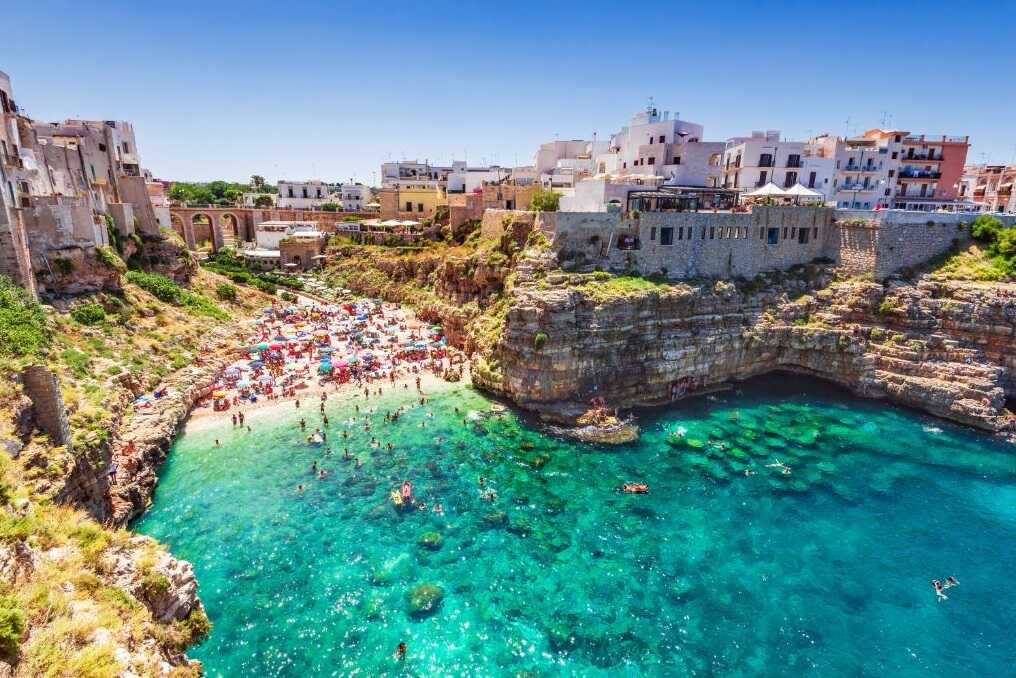
For the sixth day of your itinerary, we will move to the coast to visit two towns that offer a beautiful view of the sea. We are talking about Polignano a Mare, the birthplace of Domenico Modugno and Monopoli.
One of the major attractions of Polignano a Mare is Lama Monachile, a single-span Roman construction dating back to the 2nd century AD. Cala Paura beach is a small corner of paradise composed of two inlets and a small dock for traditional boats. The coast of Polignano a Mare also offers a large number of sea caves that can be visited by booking a boat tour.
The second half of the day is dedicated to Monopoli, one of the most active and populous ports in Puglia. Its historic center is a triumph of stately buildings and churches such as the Cathedral Maria Santissima della Madia, with its Baroque façade and bell tower. Not to be missed in Monopoli are the Castle of Charles V and the Castle of Santo Stefano. But Monopoli is famous above all for its beaches and coves with clear water. Among the most famous and visited bays are Cala Porta Vecchia, Porto Nero, Porto Verde and Copacabana. End the day with a dinner in a typical restaurant in the historic center of Monopoli, before returning to Ostuni.
Day 7: Bari
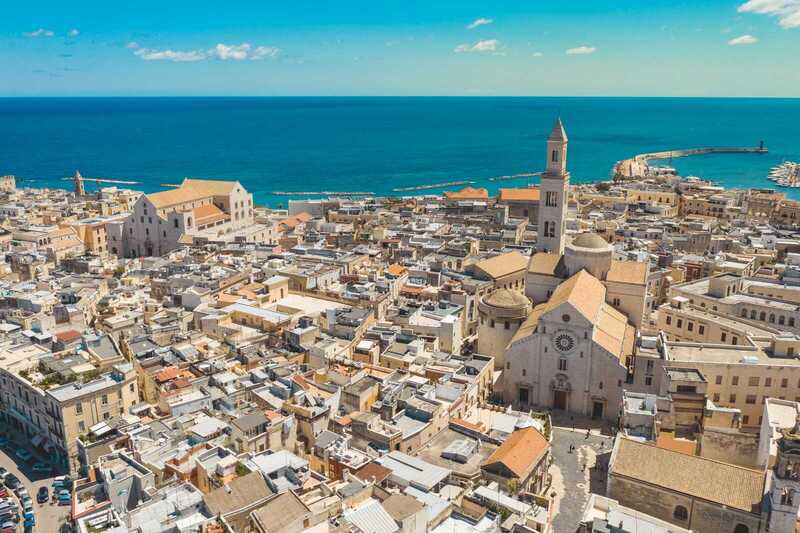
For the seventh day of your 10-day tour of Puglia, we will change area again and arrive in Bari, the capital of Puglia, the new base of your trip to Puglia.
Your itinerary in Bari will begin with a visit to the Norman-Swabian Castle, the imposing fortress located on the edge of the Old City. In front of the entrance to the castle, once you have crossed the road, you will come across the drying racks displaying fresh pasta, and then enter the street of the same name (Via dell’Arco Basso, also called Via delle Orecchiette). It is this little street that has made Bari so famous worldwide, thanks to the skilled hands of the ladies who live there and who, every day, prepare kilos and kilos of fresh pasta. Lose yourself in the narrow streets of the historic center until you reach the Basilica of San Nicola (which houses the relics of San Nicola) and take a lunch break with the typical focaccia barese in one of the many bakeries in the historic center. We recommend the Panificio Fiore and the Panificio Santa Rita.
In the afternoon, the itinerary continues along the seafront; here you will find the famous kiosk “El Chiringuito”, among colorful boats and gozzi, with the unmistakable Teatro Margherita as a backdrop. You cannot miss a Puglian aperitif overlooking the sea in one of the many bars here.
Before evening falls, take some time for a walk from Piazza Ferrarese to the Muraglia, passing by Piazza Mercantile. Along this route you can enjoy a beautiful view of the city.
End your day in Bari with a dinner of orecchiette with turnip tops in a typical Puglian restaurant in the historic center, before returning to the hotel.
Day 8: Giovinazzo and Molfetta
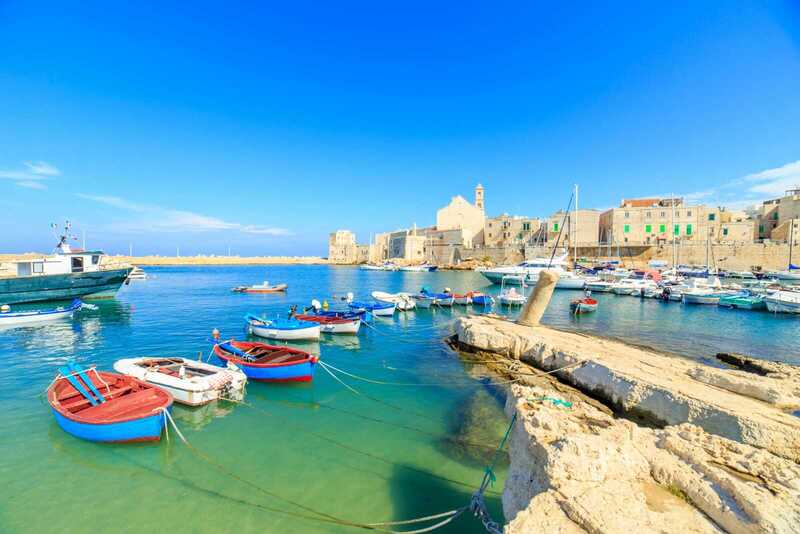
On the eighth day of your tour in Puglia, we will move north, along the coast of Bari, towards Giovinazzo.
It is a characteristic medieval village that is accessed through an ancient gate called Arco di Traiano. Don’t miss a visit to the beautiful Cathedral that preserves some parts of the primitive Apulian architecture and the characteristic little port.
Stop for lunch in one of the characteristic restaurants in the historic center, before heading to Molfetta, the second stop of your day. It is a town very similar to Bari with a modern historic center and a beautiful view of the harbor. In Molfetta you can spend a few hours shopping inside the Puglia Village, an open-air shopping center and outlet very popular with Apulians, before returning to Bari.
Day 9: Matera, the city of Sassi
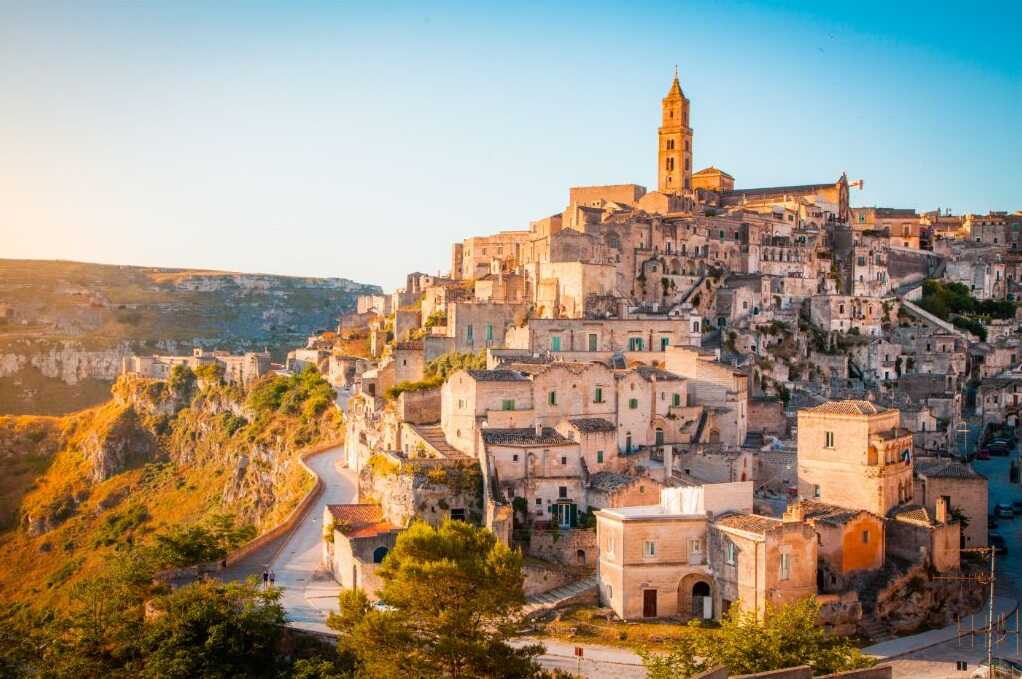
On the ninth day of your trip to Puglia, we completely change the setting and head to nearby Basilicata, specifically Matera, the famous city of Sassi. From Bari the journey is about an hour, which makes it an unmissable stop for those coming to Puglia, given its notable proximity. In Matera you can’t miss a visit to the two neighborhoods: Sasso Barisano, the largest district, full of shops, restaurants and hotels, and Sasso Caveoso, the oldest part of the city. But that’s not all: the city is also full of rock churches and natural areas with truly extraordinary landscapes and there is no shortage of unmissable museums or events to attend.
A building to visit is Casa Noha, an ancient residence that belonged to a noble family and which today is a tourist information center or, again, the Cathedral of Matera, from which you can admire the landscape of Sasso Barisano and the “cave-house”. Continue your visit by walking through the alleys of Matera where you can find local artisan products and buy beautiful souvenirs as a memento of the city.
Not to be missed are the delicacies of the culinary tradition of Matera, based on legumes, vegetables, cheeses (caciocavallo podolico, cacioricotta, salted pecorino and many others), meat, homemade pasta and the delicious IGP Matera bread, a bread made exclusively with durum wheat semolina.
At the end of your day, we recommend spending the night right here to enjoy the unique atmosphere of this village at night.
Day 10: the Alta Murgia of Puglia (Gravina in Puglia and Altamura)
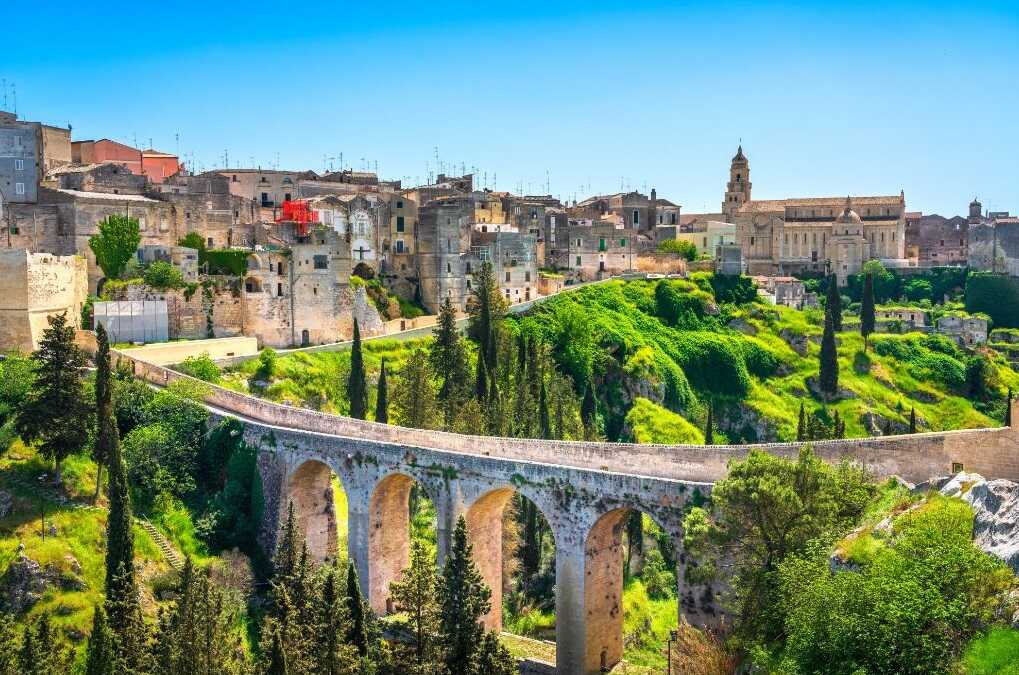
The last day of your tour of Puglia is dedicated to visiting the Alta Murgia of Puglia, in particular the towns of Gravina in Puglia and Altamura.
The first part of the day is dedicated to visiting Gravina in Puglia and its canyon of karst origin. Do not miss some sites of notable cultural interest such as the Grotta delle sette camere, the crypt of San Vito Vecchio, the aqueduct bridge, the sanctuary of the Madonna della Stella and the church of San Michele delle grotte.
For lunch, you can enjoy the focaccia di San Giuseppe, filled with anchovies, sultanas and onions in one of the bakeries in the historic center, before moving on to Altamura, the second stop on your last day.
Altamura has many points of interest, including the historic center and the typical fortified masserie, churches and other places of interest. There are also museums, the Lamalunga cave and the discovery of the Altamura man. Before returning to Bari, you cannot miss trying the delicious Altamura DOP bread and IGP lentils.
Your 10-day itinerary in Puglia ends here. If you have more days available, you can enrich your itinerary by visiting the Gargano area, the north of Puglia. You can find our itinerary ideas here.
